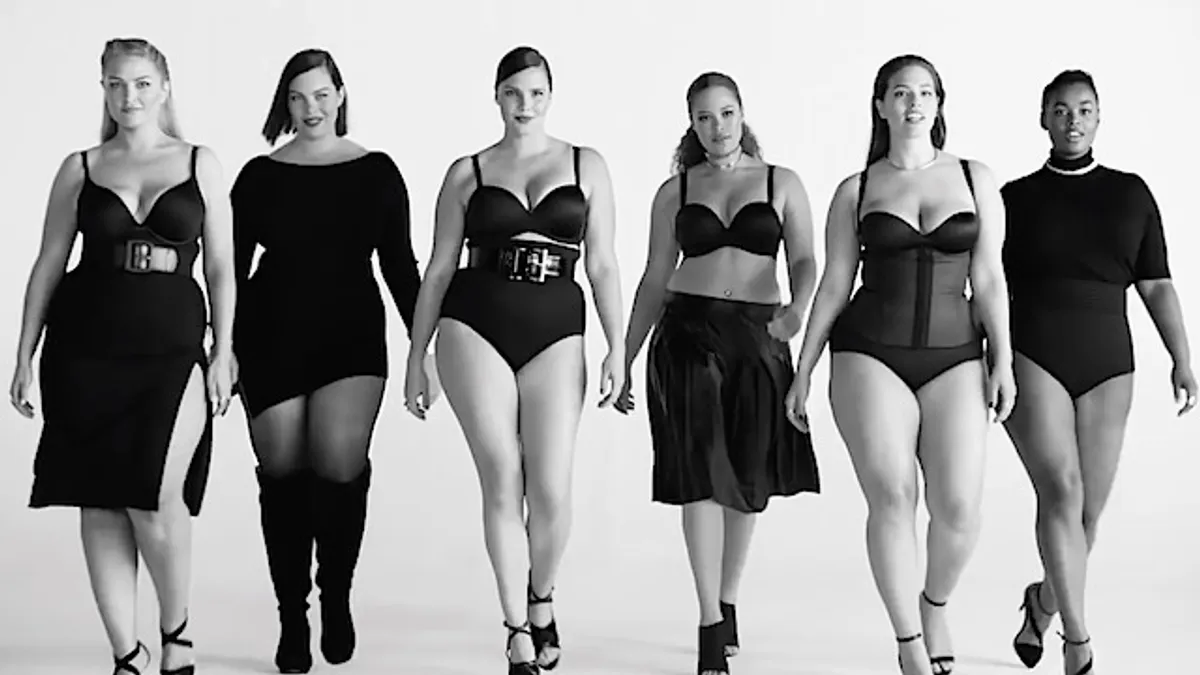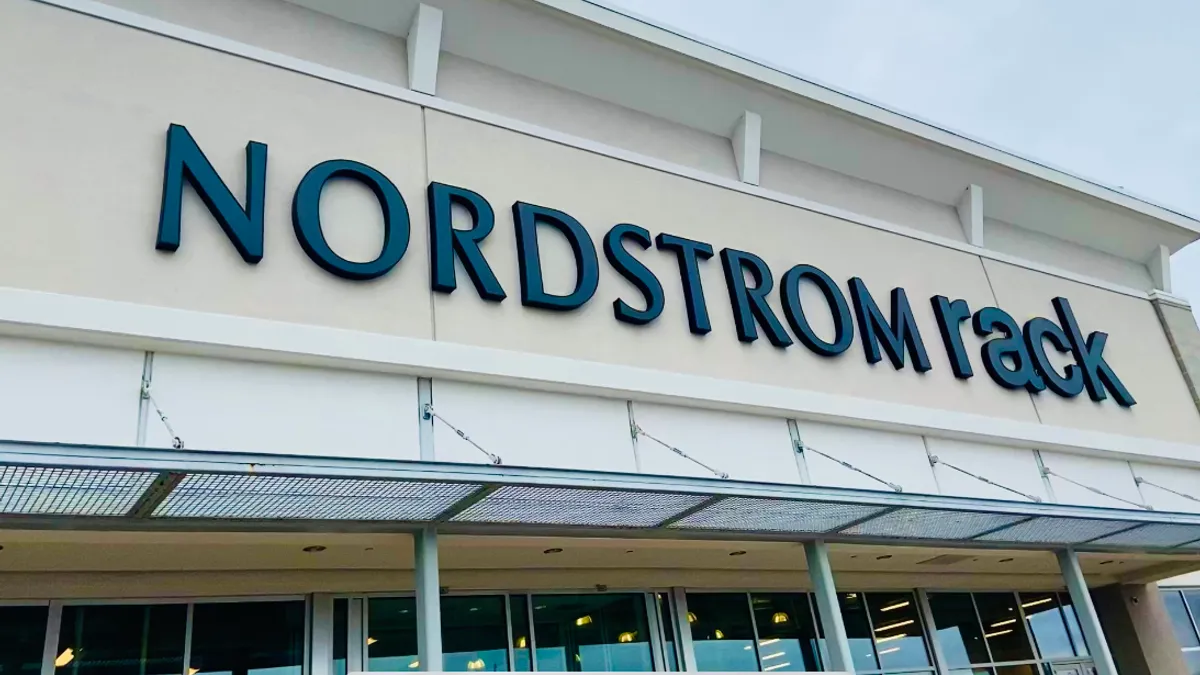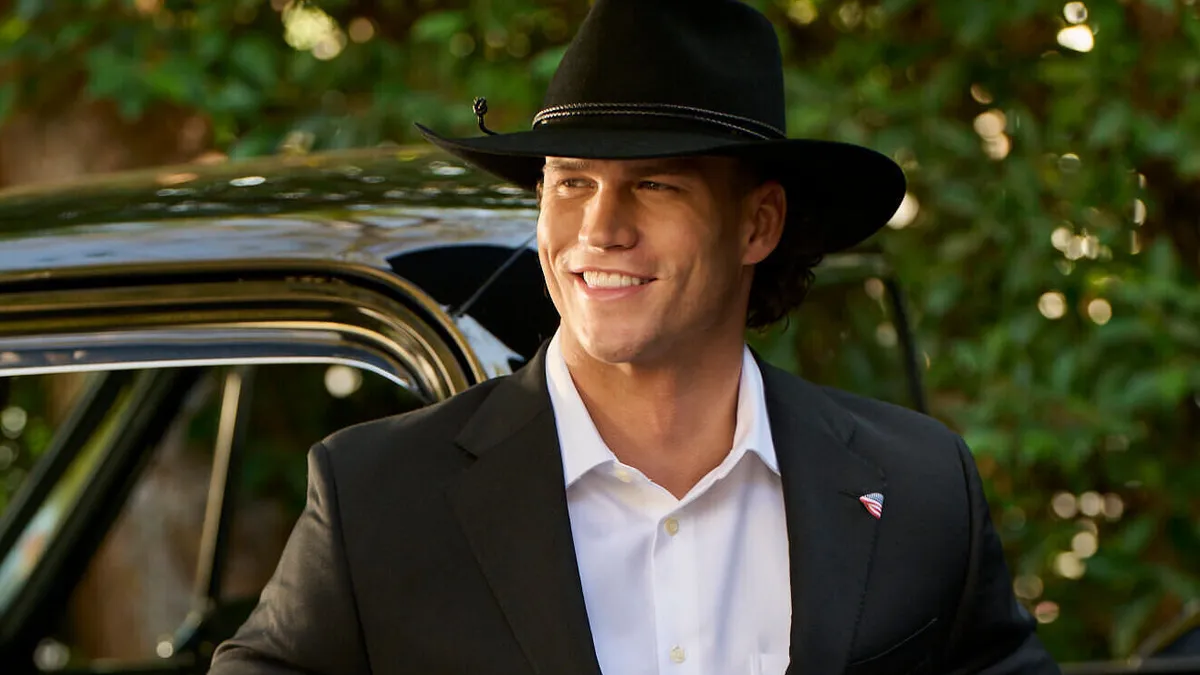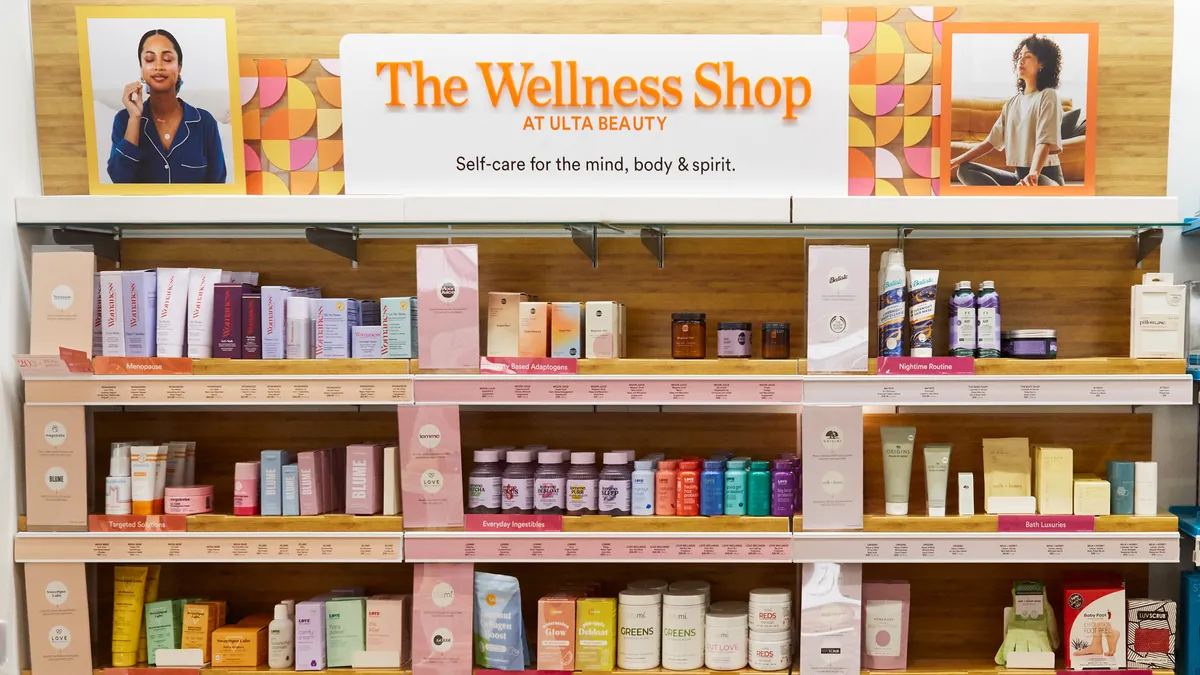This year’s customary New York Fashion Week production from Marc Jacobs had all the makings of a buzzed-about fashion show—wacky invites, celebrity attendees, and a theatric backdrop. But amid the post-show slideshow of looks, there was a surprising addition: plus-size model and singer Beth Ditto, smizing for the camera while adorned in an embellished white strapless dress.
The appearance of a plus-size model among the typically skinny models gracing fashion runways is slowly transitioning from an outlier to a trend. Designers Zoe Latta and Mike Eckhaus have peppered their runways with a diverse range of models—“nodels,” or non-models, as they call them—that come in a variety of ages, sizes, and skin colors. The move has garnered the brand positive press from a variety of publications, including the New York Times, Quartz, and Vogue. Designer Carrie Hammer’s February fashion show, dubbed “Role Models Not Runway Models,” also sidestepped traditional models for female CEOs, writers, entrepreneurs, and actress Jamie Brewer, the first model with Down syndrome to walk the runway.
While exclusivity was once embraced by many retailers as the very definition of their brand, many retailers are now cultivating a path towards a more inclusive brand. As one of the most educated generations of Americans come of age, retailers will need to adapt to different forms of self expression and broadening social conscience—while still maintaining their own unique brand.
Body type
For most of the past century, the stereotypical model for runways, advertisements, and even in-store mannequins has been skinny, tall, and white—an almost intimidating figure with perfect skin and hair, and the body to match. While not quite proven to sell more clothes, retailers played on women’s insecurities and the societal pressures women face to be thin as a marketing ploy.
“A lot of the fashion world, they take advantage of insecurity by making people more insecure,” James Rhee, CEO of plus-size retailer Ashley Stewart, told Retail Dive. “What I love about Ashley and the reason that I wanted to be a part of it is that we know that there is insecurity but we're trying to make them feel better.”
Along with a revelation that these negative marketing methods don’t actually seem to have any positive effect on retail sales, some companies have realized that many plus-sized customers want more from their shopping experience. It’s a smart move, considering the substantial market. According to NPD chief analyst Marshal Cohen, the market is now valued at $17 billion, and close to $18 billion with the juniors segment added in. Today, 67% of U.S. women are between size 14 to 34.
Rhee attributes a big part of Ashley Stewart’s recent success (avoiding a second bankruptcy in 2013 and growing both its organic sales growth and e-commerce in just two years) to the personalized experience it offers shoppers. Recognizing the insecurities that plus-size women might encounter while shopping, Rhee has encouraged store managers to focus on personal relationships, doing away with the retailer’s compensation model based on sales entirely.
Bit by bit, major retailers from Target to T.J. Maxx are also starting to reach out to this demographic and offer larger sizes—or feature less-than-traditional body types in their advertising.
American Eagle last year featured a range of women in its advertising for its Aerie bra and underwear brand, promoting its decision to eschew Photoshop in all Aerie promotional photos going forward.
Aerie said the decision was made after looking at its target millennial market and noticing that females seem to be more empowered than ever.
"We just knew that it would really resonate with this generation," Aerie's president, Jennifer Foyle, told Business Insider. "Why would we even be airbrushing these models? They're beautiful as is."
In the second quarter this year, Aerie’s sales soared 18%, contributing to American Eagle’s 12% rise in net revenue. While Aerie’s success can’t be solely attributed to its decision to take a more natural approach to its marketing, the brand’s growth under this new campaign shows there is market for clear and realistic body images in retail marketing.
Abercrombie: The poster child for exclusivity
American Eagle’s body-friendly advertising is even more radical when compared to the branding approach its competitors have taken in past years.
Pretty much everyone remembers what Abercrombie & Fitch’s then-CEO Mike Jeffries told Salon in 2006:
“In every school there are the cool and popular kids, and then there are the not-so-cool kids. Candidly, we go after the cool kids. We go after the attractive all-American kid with a great attitude and a lot of friends. A lot of people don’t belong [in our clothes], and they can’t belong. Are we exclusionary? Absolutely. Those companies that are in trouble are trying to target everybody: young, old, fat, skinny. But then you become totally vanilla. You don’t alienate anybody, but you don’t excite anybody, either.”
This “cool-kid” ethos—as well as the company’s “Look Policy Guidelines” that reportedly instructed employees on acceptable hair styles, makeup, clothing, and even nail polish color to don while working—garnered Abercrombie a crop of negative press at a time when the retailer didn’t need to add to the growing criticism it already faced. In June this year, the U.S. Supreme Court ruled in favor of Samantha Elauf, who alleged that the retailer violated workplace discrimination law when it did not hire her because the headscarf she wore did not adhere to the above “Look Policy.”
This came as the retailer continued to suffer slumping sales, as teens became less impressed by logo-centric clothing and more interested in cheaper, more unique clothes from fast fashion retailers H&M and Forever 21. In December last year, Jeffries left both his CEO and board posts, saying it “was the right time for new leadership to take the company forward in the next phase of its development." Abercrombie's stock shot up almost 10% on the announcement, indicating that investors were ready for a change of leadership at the company.
In April, a month after it reported a 14% sales drop in the holiday quarter 2014, the retailer did an about-face, announcing that it would stop hiring workers based on their “body type or physical attractiveness” and it would begin phasing out “sexualized marketing” this year, doing away with the ubiquitous shirtless models at Abercrombie and Hollister store openings.
Abercrombie has also made an effort to distance itself from the logo-pervasive design that seemed to promote this exclusive branding, instead focusing on speeding up its supply chain to stock in-style wares. While only time will tell if this strategy pays off, the retailer has posted compelling results in the most recent quarter, beating expectations and sending shares up 9%.
While Abercrombie’s change was a sorely-needed step in the right direction, Erich Joachimsthaler, CEO of branding consultant company Vivaldi Partners, told Retail Dive that he doesn’t believe the brand has differentiated itself enough after the move.
“Right now, regarding Abercrombie, everyone is celebrating that sales didn't drop as much as they expected last quarter. But that’s just the function of the right product and right trend,” Joachimsthaler said. “Before this brand can have a real successful future like it had in the past, it again needs to define what it stands for and what it stands against. And that was really clear under Mike Jeffries, whether you liked it or not.”
Retailers adapt to society 'growing up'
Both Rhee and Joachimsthaler agree that targeting once-alienated audiences has its monetary advantages for retailers—but a shift in social perceptions is also helping.
“It's a general social movement, I think. A lot of self described, or in reality, disenfranchised people are speaking up and saying, you know ‘this isn't fair,’” Rhee said.
Building off this social awareness, some plus-sized retailers have almost taken an activist approach to their latest marketing campaigns. Plus-size retailer Lane Bryant unveiled its latest advertising push in Vogue’s September issue with the credo #PlusIsEqual accompanying black and white photos of lingerie-clad plus-sized models—the only two pages featuring plus-sized women in the magazine’s more than 700 pages.
The retailer followed the spread with a rally in Times Square, which left at least one person feeling like she had just attended a political rally sponsored by Lane Bryant.
As this kind of broader acceptance takes hold, there are signs that it's coming to the fashion and retail worlds, too, from disabled models walking in fashion shows to retail collaborations incorporating fashion-forward headscarfs and women in hijabs.
"Back in the day, having a disability was [considered] a bad thing. It's become a lot more acceptable and people are enjoying it,” Blake Leeper, a double amputee that walked in Naomi Campbell’s Fashion for Relief charity show, told Huffington Post. "It's one thing for me to go out there and prove myself the world, but it's another thing to have that opportunity."
If high fashion—notoriously exclusive and high-brow in the past—is starting to open its shows and runways to those outside the thin-model mold, the idea that retailers—who have a much less exclusive clientele—are now selling inclusivity to the masses isn’t hard to grasp.
And as retailers, particularly those tied to a specific demographic like Abercrombie, continue to reinvent themselves to adhere to generational shifts in style and taste, they are also responding to generational shifts in self-expression.
As Joachimsthaler explains, past generations used brands and logos to define who they were—ownership was a form of self-expression. Now, thanks to digital and social media, the whole concept has been turned on its head, as millennials are using their posts on Facebook and likes on Instagram to project a public image. Instead of wearing a shirt plastered with Abercrombie's signature moose logo to be one of the "cool kids," teenagers are spending their money on experiences like concerts, and posting pictures of the event on their Facebook page as a form of self-expression. While buying the "cool kid" gear might once have separated the haves from the have-nots, social media today is everywhere—and free.
“There’s a fundamental shift with a new generation of millennials that varies from self expression,” Joachimsthaler said. “It’s almost like our society is growing up.”




















